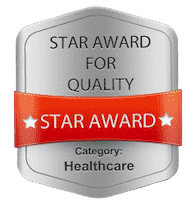If you or your loved one is suffering due to oesophageal cancer, then you need our specially formulated Homeopathy treatment for oesophageal cancer, tried and tested over the last 20 years to halt the progression of disease further and to live an independent life.
See our specialists at any Welling Clinic in India or order online instantly from the link above.
Best treatment of oesophageal cancer is a multi-therapy system. We have seen our CUREplus Homeopathic cancer treatment can help you manage oesophagus cancer in a much better way than conventional treatment. But many times patients come to us in such advanced stages that we prefer our treatment along with chemotherapy or surgery to give faster relief.
The best long-term results are achieved by combination therapy depending on age, stage of oesophageal cancer and general health condition of patient. While conventional treatments like chemotherapy or radiation therapy helps in faster removal of cancer, Homeopathy Treatment for oesophageal cancer can help in
- Regression of oesophageal cancer
- Prevention of recurrence of oesophageal cancer,
- Removing side-effects of chemo and radiation therapy,
- Relieving cancer pains
- Improving general quality of life and hence, a better reaction to other treatments.
The speciality CUREplus Homeopathic treatment for oesophageal cancer, developed at Welling Clinics can be very helpful for those suffering from oesophageal cancer.
Call us today on (+91) 80 80 850 950 to book an appointment and meet our specialist to know more about our speciality Homeopathy treatment for oesophageal cancer.
OESOPHAGEAL CANCER
Introduction of oesophageal cancer:
- Oesophageal cancer usually begins in the cells that line the inside of the oesophagus.
- It is at-least twice as common in males as in females, except for tumors arising in the post-cricoid area, for which there is a female preponderance.
- The incidence increases with age i.e. it common between age group of 45-54 years and 65-74 years.
- Alcohol and smoking plays an important role in causing oesophageal cancer.
- Estimated new cases and deaths from oesophageal cancer in the United States in 2013:
- New cases: 17,990
- Deaths: 15,210
Types of Oesophageal Cancer
- There are two types of oesophageal cancer:
- Squamous cell carcinoma
- Adenocarcinoma
- Out of these two types Squamous cell carcinoma is the most common type, but Adenocarcinoma is increasing in incidence, especially in younger, white men.
Adenocarcinoma: – Adenocarcinoma begins in the cells of mucus-secreting glands in the oesophagus. Adenocarcinoma occurs most often in the lower portion of the oesophagus. Adenocarcinoma is the most common form of oesophageal cancer in the United States, and it affects primarily white men.
- Squamous cell carcinoma: –The squamous cells are flat, thin cells that line the surface of the oesophagus. Squamous cell carcinoma occurs most often in the middle of the oesophagus. Squamous cell carcinoma is the most prevalent oesophageal cancer worldwide.
- Other rare types.The rare types of oesophageal cancer includes:
- Choriocarcinoma
- Lymphoma
- Melanoma
- Sarcoma
- Small cell cancer
How You Get Oesophageal Cancer?
- The stages of oesophageal cancer are based on “The American Joint Committee on Cancer’s (AJCC) TNM system”, a commonly accepted method based on three key components:
- Tumor (T):- describes the size of the original tumor.
- Node (N):- indicates whether the cancer is present in the lymph nodes.
- Metastasis (M):- refers to whether cancer has spread to other parts of the body.
- Once the T, N and M scores have been assigned, an overall stage is assigned.
- Stage 0:- Stage 0 oesophageal cancer is also called as “carcinoma in situ” and is confined to the inner layer of epithelial cells lining the oesophagus.
- Stage I: – In Stage 1, oesophageal cancer tumor is small i.e. (7 cm or less across) and limited to the oesophagus. Cancers have spread into the connective tissue layer below theepithelium but have not invaded the underlying muscle layer.
- Stage II: – In Stage II, oesophageal cancer tumor has grown larger but still remains within the oesophagus. In this stage, there is no evidence of spread to lymph nodes or distant sites.Cancers either have spread through the muscle layer to the outer boundaries of the oesophagus or have spread only into the muscle layer but have reached nearby lymph nodes.
- Stage III: – In Stage III, oesophageal cancer tumor has grown beyond the oesophagus and may now extend into nearby tissues or organs but it may or may not have spread to nearby lymph nodes.
- Stage IV: – In stage IV, tumor may be any size and has grown beyond the oesophagus. In this stage, cancers have metastasized, or spread, to distant organs such as the stomach,liver, bone, or brain.
Symptoms of Oesophageal Cancer
Signs and symptoms of oesophageal cancer include:
- Difficulty swallowing (Dysphagia) – It is the most common symptoms of oesophageal cancer.
- Frequent choking while eating.
- Unexpected weight loss.
- Chronic hiccups, Chronic cough, Hoarseness of voice.
- Chest pain, pressure or burning feeling.
- Indigestion or heartburn.
- Abdominal pain
- Fatigue
Diagnosis of Oesophageal Cancer
Diagnosis of oesophageal cancer is carried out on basis of its type and stage thorough examination.
Ø The oesophagus is visually examined with an endoscope, and tissue samples are taken for biopsy.
Ø Several imaging methods are frequently used, such as chest x-rays, computed tomography (CT) scans, PET scan and ultrasound.
Ø There is no definitive laboratory test for oesophageal cancer.
Treatment of Oesophageal Cancer
Surgery for oesophageal cancer: – oesophageal cancers are best treated surgically when possible.
- If the cancer is confined to the upper region of the oesophagus, an “oesophagectomy” may be done to remove the cancerous portion, along with nearby lymph nodes, and to reconnect the remaining oesophagus to the stomach.
- If cancers confined to the lower region of the oesophagus, it may be necessary to perform an “oesophagogastrectomy”, in which a portion of the oesophagus is removed along with a portion of the stomach. The stomach is then reattached directly to the remaining oesophagus, or a segment of the colon is used to link the stomach and oesophagus.
- Both of these surgeries are difficult and often result in serious complications. Other, less-drastic surgeries may be used to relieve symptoms, especially when surgical cure is not possible.
Chemotherapy for Oesophageal Cancer
Chemotherapy is drug treatment that uses chemicals to kill cancer cells. Chemotherapy drugs are typically used before or after surgery in people with oesophageal cancer. Chemotherapy can also be combined with radiation therapy. In people with advanced cancer that has spread beyond the oesophagus, chemotherapy may be used alone to help relieve signs and symptoms caused by the cancer. The chemotherapy side effects depend on which chemotherapy drugs.
Radiation for Oesophageal Cancer
Treatment with radiation alone does not cure oesophageal cancer, but it may be used either before surgery to shrink the size of the tumour or following surgery to destroy remaining cancer cells. Radiation therapy uses high-powered energy beams to kill cancer cells. Radiation therapy is also used to relieve symptoms. The side effects of radiation treatment include vomiting, diarrhoea, fatigue, and oesophageal irritation.
Homeopathy Treatment for Oesophagus Cancer
The speciality Homeopathic treatment for oesophageal cancer, developed at Welling Clinics can be very helpful for those suffering from oesophageal cancer.
Call us today on (+91) 80 80 850 950 to book an appointment and meet our specialist to know more about our speciality Homeopathy treatment for oesophageal cancer.



